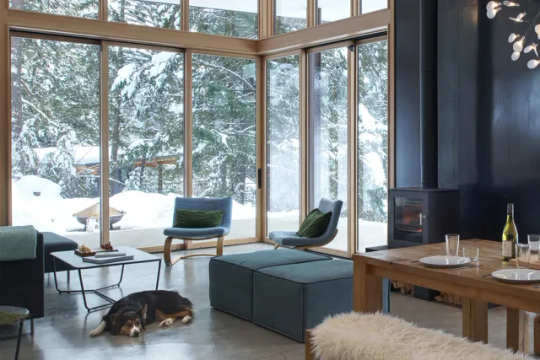Text
The Evolution of Luxury Windows and Doors: Tracing Aesthetic Journeys Through Time
Luxury windows and doors stand as timeless elements in architectural design, offering a seamless blend of functionality and aesthetics.
This journey through the evolution of these essential features unveils the remarkable shifts and innovations that have shaped the industry from its early roots to the contemporary designs we admire today.
Historical Overview:
Early Windows and Doors: In the annals of architectural history, the introduction of glass marked a pivotal moment in window and door design. From the influence of Gothic and Renaissance styles emerged intricate details that defined the essence of luxury.

The Victorian Era:
The Victorian era witnessed a flourish of ornate designs and the introduction of stained glass, transforming windows and doors into true works of art that reflected the opulence of the times.
Art Deco and Modernism: As the 20th century dawned, the Art Deco and Modernism movements brought forth streamlined designs and geometric shapes, leaving an indelible mark on luxury design aesthetics.
Mid-20th Century to Contemporary Trends:
Post-War Minimalism: In the post-war era, minimalism took center stage, with an emphasis on simplicity and clean lines. Sliding glass doors became a hallmark of this period, revolutionizing both form and function.
Sustainable Design Movement:
The latter half of the 20th century witnessed a shift towards sustainable design, with the integration of eco-friendly materials and energy-efficient solutions, aligning luxury with environmental consciousness.
Technological Advancements:
As we entered the digital age, luxury windows and doors evolved with the integration of smart technologies. Homeowners could now enjoy automated features and control their environments remotely, setting new standards for modern living.
Key Innovations:
Materials Revolution: Luxury underwent a materials revolution, introducing aluminum and fiberglass into the design lexicon. These materials not only enhanced durability but also allowed for innovative aesthetic expressions.
Security Enhancements:
Locking systems evolved to meet the demands of security-conscious homeowners, and the incorporation of impact-resistant glass became a standard, offering both peace of mind and cutting-edge design.
Case Studies:
Frank Lloyd Wright's Architectural Contributions: The architectural genius of Frank Lloyd Wright left an indelible mark on luxury design. His innovative use of windows, such as the iconic Fallingwater, showcased a harmonious integration of nature and architecture.
Modern Luxury Designs by Renowned Architects:
Today, architects continue to push boundaries, creating modern luxury designs that redefine the concept of opulence. The fusion of sleek lines, expansive glass, and cutting-edge materials exemplifies the current era of luxury window and door design.
Challenges and Future Trends:
Despite the progress, challenges persist, including balancing sustainability with opulence. Looking forward, the industry is poised for even more innovation, with trends suggesting a continued focus on eco-friendly materials and seamlessly integrated smart technologies.
Conclusion:
As we reflect on the evolution of luxury windows and doors, one thing remains clear: these elements are more than functional necessities—they are timeless canvases that architects continue to paint with innovation.
From the ornate designs of yesteryear to the sleek, sustainable solutions of today, luxury windows and doors are testaments to the enduring marriage of form and function in architectural design. You can check Services at
2 notes
·
View notes